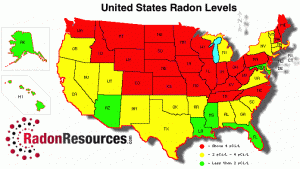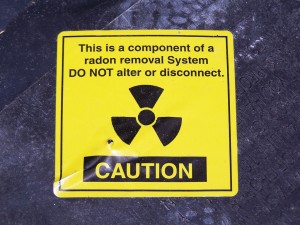Have you followed our advice and carried out the National Radon Action Week checklist we provided a few days ago? If you haven’t, you should get on it already.
You see, radon is the second leading cause of lung cancer in the United States and many countries over. It is the leading cause in non-smokers, which means it’s a much more significant problem than many people even realize. In the U.S. alone it is responsible for the deaths of more than 21,000 each year through lung cancer. There are no short-term symptoms, and the health effects arise from long-term exposure. Since radon gas increases the “risk” of lung cancer it’s difficult to say when you – or anyone else – will be diagnosed. Some may get lung cancer after being exposed to elevated levels of radon for two years, while others may get lung cancer after being exposed for more than a decade. Then again, the same holds true of smoking.
National Radon Action Week May Be Over Soon, But Awareness Needs to Continue
 That’s exactly why it’s beneficial to have your residence tested for the presence of radon gas as soon as possible. The sooner you know there’s a problem, the sooner you can take action. That’s also why this week has been declared National Radon Action Week. We need more people aware of the problem to create an overall widespread awareness. Perhaps more important than that however, is we need people taking action to mitigate the problem.
That’s exactly why it’s beneficial to have your residence tested for the presence of radon gas as soon as possible. The sooner you know there’s a problem, the sooner you can take action. That’s also why this week has been declared National Radon Action Week. We need more people aware of the problem to create an overall widespread awareness. Perhaps more important than that however, is we need people taking action to mitigate the problem.
It doesn’t matter what month, week or day it is. It doesn’t matter if it’s National Radon Action week or not. What matters is that you educate yourself on the dangers of radon, and test your home. You can always find the information you need, and you always have the option to pass it on to family, friends and colleagues. What you should really be focused on this week is the future.
How are you planning to test your own home? Are you going to request your children’s school or day care be tested, as well? What about your work, are you going to ensure that is tested also?
National Radon Action Week: Learn About Radon
 Radon is a naturally ocurring gas, released as a decay product of common elements such as Uranium which can be found in the soil and rocks beneath our feet. Long story short, that means it can seep up from the ground anywhere, regardless of geographic location. It can be a problem in any country, any state or any building. All it takes is for a small amount of radon to seep inside a structure, where it collects in greater amounts. It can worm it’s way in through cracks in the foundation, walls or flooring.
Radon is a naturally ocurring gas, released as a decay product of common elements such as Uranium which can be found in the soil and rocks beneath our feet. Long story short, that means it can seep up from the ground anywhere, regardless of geographic location. It can be a problem in any country, any state or any building. All it takes is for a small amount of radon to seep inside a structure, where it collects in greater amounts. It can worm it’s way in through cracks in the foundation, walls or flooring.
If a location is tested and elevated levels are found, a ventilation or mitigation system needs to be installed. This will essentially remove the gas from the building or residence, venting it into the outside air.
Indoor air pollution is a serious problem, and radon gas is the biggest culprit. The U.S. EPA estimates that every one in fifteen homes has elevated levels.
Continue to Share Information Even After National Radon Action Week Comes to a Close
The lesson here is that you should not just forget about radon gas after this week is over. Have a monitor installed in your home, especially if you discover elevated levels and install a mitigation system. Tell others about your experience, or even abou the possibility of radon. Share stats, webpage links and resources with everyone you can. Finally, encourage them to take action and have their own home or business tested for the presence of the deadly gas radon.
National Radon Action Week may soon be coming to a close, but that does not mean you – or anyone else – needs to abandon your efforts to increase awareness. Let’s keep it going.


